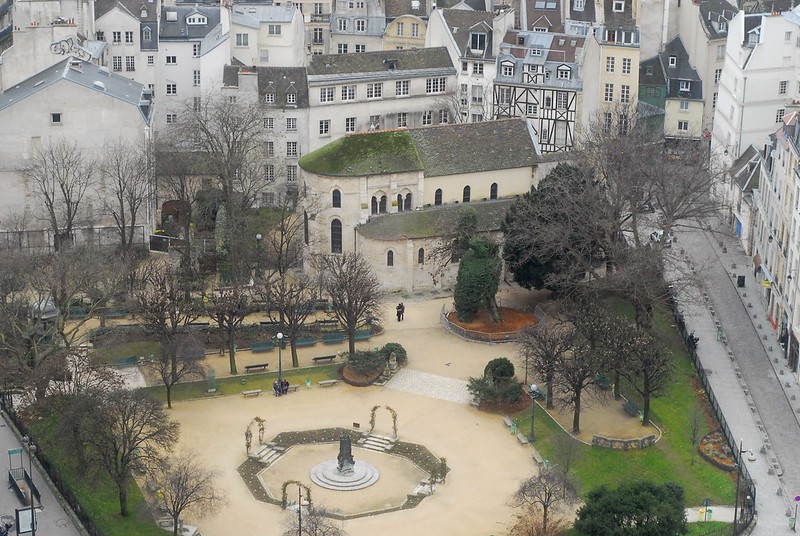Or, the Guardians of Knowledge
Published at 8:36 pm on July 9th, 2022
Filed under: Dear Diary, Artistic.
Back in March, I wrote about the architecture of Grimsby Central Library and all its surviving 1960s detail touches—the building opened in 1968 and many original details and interior fittings still survive. I briefly mentioned in passing the five gaunt, slightly macabre figures sculpted in relief on the south side of the building. Well, the other day I happened to be passing, it was a bright and sunny day, so I pointed my camera lens at them.
Read more...
Keyword noise: Lincolnshire, North East Lincolnshire, Grimsby, Grimsby Library, architecture, art, sculpture, The Guardians Of Knowledge, Peter Todd.
In which we go to a misty Paris
Published at 6:56 pm on April 30th, 2010
Filed under: Photobloggery.

Read more...
Keyword noise: angel, belfry, bells, catacombs, cathedral, France, Latin Quarter, Left Bank, Notre Dame, Paris, photography, Quartier Latin, Rive Gauche, sculpture, spire, stone.
In which we look at some non-inflatables
Published at 9:30 am on August 1st, 2009
Filed under: Artistic.
Something else that got done in London the other weekend: we popped along to the Serpentine Gallery, to see the Jeff Koons show that’s on there at the moment. His first major show in Britain, apparently; his first major show in a 20-odd year career.
Read more...
Keyword noise: art, chains, exhibition, fetish, gallery, inflatable, Jeff Koons, London, sculpture, Serpentine Gallery, Waldemar Januszczak.
In which we talk about art and anonymity
Published at 6:55 pm on October 2nd, 2007
Filed under: Artistic.
Over the years I’ve had all sorts of plans for art projects which have never quite got off the ground. So I’ve never had to answer the question: how would I feel if I did something Artistic, which became famous all over the place, but nobody knew it was me who did it.
Read more...
Keyword noise: anonymity, art, artists, Billy Johnson, Cudworth, Barnsley, Goathland, Kilburn, mystery, performance art, sculpture, stone head, Yorkshire.
Or, visiting the Tate
Published at 7:07 am on February 28th, 2006
Filed under: Artistic, Dear Diary.
Deciding to do something cultural whilst in the Big City, I visited Tate Modern to see Rachel Whiteread’s Embankment, her Turbine Hall installation made up of thousands of plastic casts of cardboard boxes.
Read more...
Keyword noise: art, children, Embankment, gallery, holiday, London, playing, Rachel Whiteread, sculpture, Tate Modern, Turbine Hall.

 Home
Home
 Newer posts »
Newer posts »